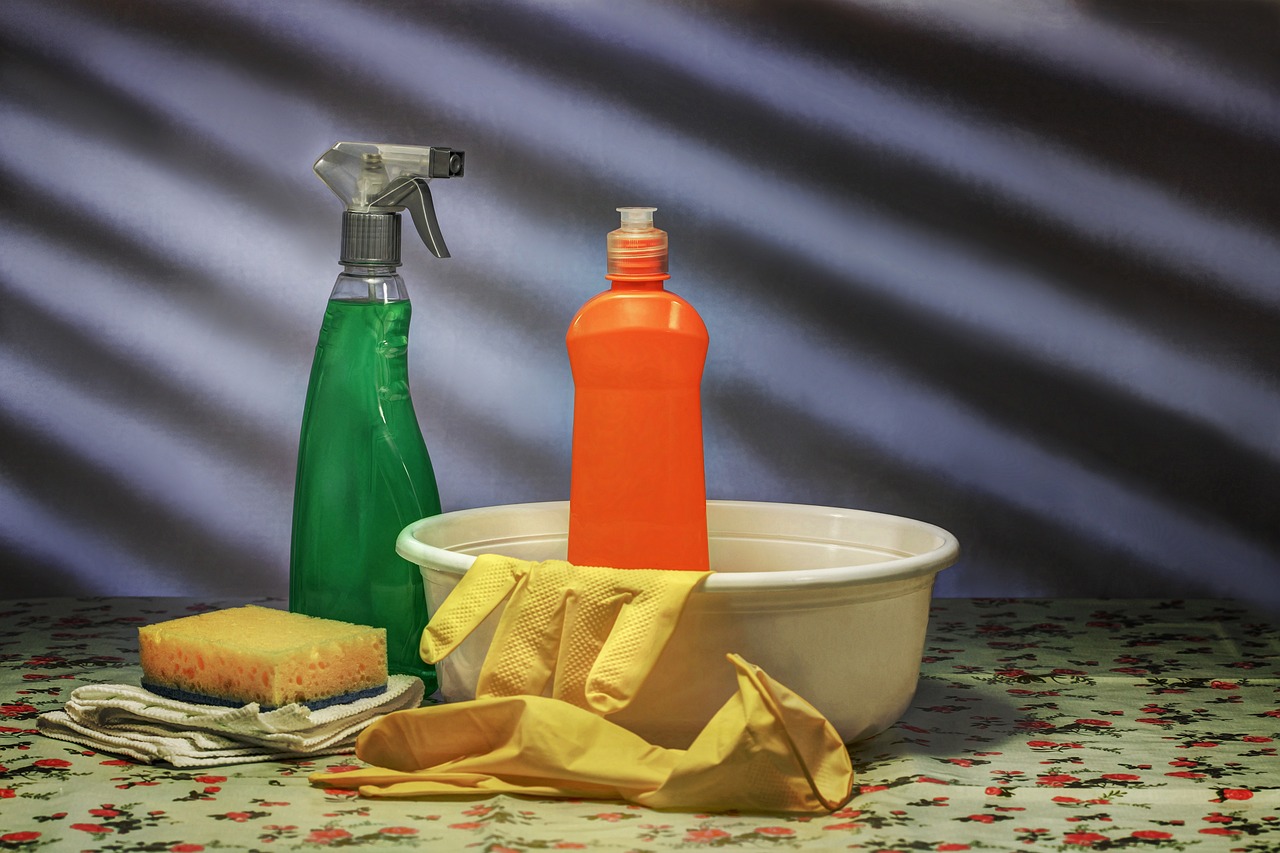Getting rid of cigarette smell in your car can be a daunting task, but it is essential for a pleasant driving experience. This article delves into effective methods to eliminate these persistent odors, providing you with practical solutions and expert insights for a fresher vehicle environment.
The cigarette smell in cars is primarily caused by the smoke particles that cling to various surfaces. These particles embed themselves in the upholstery, carpets, and even the ventilation system, making the odor particularly stubborn and difficult to remove.
Removing cigarette odors is crucial not only for your comfort but also for maintaining the resale value of your vehicle. Lingering smells can deter potential buyers and create an unpleasant environment for both drivers and passengers.
There are several cleaning methods that can effectively tackle cigarette odors. Here are some of the most recommended techniques:
- Deep Cleaning Upholstery and Carpets: Thoroughly cleaning your car’s upholstery and carpets is vital. Using a steam cleaner or a specialized upholstery cleaner can help lift smoke particles and neutralize odors trapped in fabric fibers.
- Using Odor Eliminators and Air Fresheners: Consider utilizing odor eliminators like activated charcoal or specific sprays designed to neutralize smoke smells. While air fresheners can mask odors temporarily, it’s important to choose the right products for long-lasting results.
The car’s ventilation system can harbor smoke particles, contributing to the persistent smell. Cleaning this system is essential for comprehensive odor removal, ensuring fresh air circulation throughout the vehicle.
- Replacing Cabin Air Filters: Regularly replacing your car’s cabin air filter can significantly reduce cigarette odors. A new filter helps trap any remaining smoke particles and improves air quality inside the vehicle.
- Using an Ozone Generator: An ozone generator can effectively eliminate odors by oxidizing smoke particles. However, it’s crucial to use it properly, as ozone can be harmful in high concentrations if not handled correctly.
Taking proactive steps to prevent cigarette odors from returning is just as important as the removal process. Here are some effective strategies:
- Establishing a No-Smoking Policy: Implementing a no-smoking policy inside your car is the most effective way to prevent future odors. Encourage passengers to smoke outside to significantly reduce the risk of lingering smells.
- Regular Cleaning and Maintenance Tips: Regularly cleaning your car and maintaining its interior can help prevent odors from settling. Simple practices like vacuuming, wiping surfaces, and using fabric fresheners can keep your car smelling fresh and inviting.
By following these comprehensive cleaning methods and preventive measures, you can effectively eliminate cigarette odors from your car, ensuring a more enjoyable driving experience for yourself and your passengers.

What Causes Cigarette Smell in Cars?
Understanding the factors that contribute to the cigarette smell in cars is essential for effective odor removal. Cigarette smoke is not just an unpleasant scent; it contains a complex mixture of chemicals and particles that can cling to various surfaces within the vehicle.
The cigarette odor in vehicles primarily stems from the combustion of tobacco, which releases thousands of compounds. These smoke particles can settle on different surfaces, making them particularly challenging to eliminate. Here are some of the main causes:
- Smoke Particles: When someone smokes in a car, tiny smoke particles can adhere to the upholstery, carpets, and even the hard surfaces like dashboards. These particles can remain long after the cigarette is extinguished.
- Ventilation Systems: The car’s ventilation system can trap smoke particles and odors. When the air conditioning or heating is turned on, these particles can be redistributed throughout the cabin, perpetuating the smell.
- Residual Tar and Nicotine: Tar and nicotine from cigarette smoke can leave a sticky residue on surfaces, which can be difficult to clean and can continue to emit odors over time.
- Upholstery and Fabrics: Soft materials like seats and carpets are particularly susceptible to absorbing smoke odors. The fibers can trap the scent, making it linger long after the source is removed.
Due to these factors, the cigarette smell can become deeply embedded in your vehicle, creating a persistent challenge for anyone trying to eliminate it. Understanding these causes is the first step in effectively addressing the issue.
Removing the cigarette smell is crucial for several reasons. Not only does it improve the comfort of passengers, but it also plays a significant role in maintaining the vehicle’s value. A car that smells of smoke can deter potential buyers and lead to a lower resale value. Moreover, lingering odors can create an unpleasant environment, making every drive less enjoyable.
There are multiple methods available for tackling cigarette odors in cars. From deep cleaning techniques to the use of specialized products, these approaches can help restore a fresh ambiance.
One of the most effective methods for removing cigarette odors is through deep cleaning the upholstery and carpets. Using a steam cleaner or upholstery cleaner can help lift smoke particles and neutralize odors trapped in fabric fibers.
Odor eliminators, such as activated charcoal or specific sprays, can neutralize smoke smells effectively. While air fresheners can mask odors temporarily, selecting the right products is essential for achieving long-lasting results.
The car’s ventilation system can harbor smoke particles, contributing to the persistent smell. Cleaning this system is critical for comprehensive odor removal, ensuring fresh air circulation.
Replacing your car’s cabin air filter can significantly reduce cigarette odors. A new filter will help trap any remaining smoke particles and improve air quality inside the vehicle.
An ozone generator can effectively eliminate odors by oxidizing smoke particles. However, proper use is crucial, as ozone can be harmful in high concentrations if not handled correctly.
Taking steps to prevent cigarette odors from returning is as important as removal. Implementing certain habits can help maintain a fresh environment in your vehicle.
Creating a no-smoking policy inside the car is the most effective way to prevent future odors. Encouraging passengers to smoke outside can significantly reduce the risk of lingering smells.
Regularly cleaning your car and maintaining its interior can help prevent odors from settling. Simple practices like vacuuming and wiping surfaces can keep your car smelling fresh and inviting.

Why Is It Important to Remove Cigarette Odor?
When it comes to maintaining your vehicle, one of the most overlooked aspects is addressing unpleasant odors, particularly cigarette smell. This odor not only affects your personal comfort but also has significant implications for the overall value of your car. Understanding why it is essential to remove cigarette odor can help you take proactive steps to ensure a pleasant driving experience.
Removing cigarette smell is crucial for preserving your car’s resale value. Potential buyers are often deterred by lingering odors, which can lead them to question the overall condition of the vehicle. A car that smells like cigarettes may be perceived as poorly maintained, resulting in lower offers or even a failure to sell. By eliminating these odors, you enhance the appeal of your vehicle, making it more attractive to prospective buyers.
Aside from affecting resale value, cigarette odors can pose health risks. The smoke from cigarettes contains numerous harmful chemicals, which can cling to surfaces within the car. Prolonged exposure to these substances can lead to respiratory issues and other health problems for both drivers and passengers. By removing the smell, you are also improving the air quality inside your vehicle, creating a safer environment for everyone.
Driving should be a comfortable and enjoyable experience. A car filled with cigarette smell can create an unpleasant atmosphere, making long drives or daily commutes less enjoyable. By addressing this issue, you can enhance your overall driving experience, allowing you to enjoy your time on the road without the distraction of unpleasant odors.
Social perceptions play a significant role in how others view your vehicle. A car that smells of cigarettes may lead to negative judgments from friends, family, or colleagues. This perception can impact not only your reputation but also your relationships. By ensuring your car is free of cigarette odors, you present a more positive image to those around you.
Removing cigarette odors is not just about immediate relief; it also involves preventing future smells from taking hold. By taking the necessary steps to clean and maintain your vehicle, you can create a barrier against the return of unpleasant odors. This proactive approach ensures that your car remains a pleasant space for you and your passengers.
In summary, the importance of removing cigarette odor from your car cannot be overstated. From protecting your investment to ensuring a healthier environment, the benefits are numerous. By taking the time to address this issue, you not only enhance your vehicle’s appeal but also contribute to a more enjoyable driving experience for everyone. Effective cleaning methods and regular maintenance will help keep your car smelling fresh and inviting.

Effective Cleaning Methods to Remove Cigarette Smell
When it comes to eliminating unpleasant odors in your vehicle, particularly the stubborn smell of cigarette smoke, employing effective cleaning methods is essential. Cigarette odors can linger in your car’s upholstery, carpets, and even the ventilation system, making it crucial to address these areas comprehensively. Below, we explore various techniques that can help restore your car’s freshness and ambiance.
To tackle cigarette odors effectively, consider the following methods:
- Deep Cleaning Upholstery: Utilizing a steam cleaner can penetrate fabric fibers, lifting smoke particles and neutralizing odors. For a thorough clean, apply a specialized upholstery cleaner that targets smoke residues.
- Cleaning Carpets: Just like upholstery, carpets absorb smoke smells. A combination of vacuuming and deep cleaning with a carpet cleaner will help eliminate these odors.
- Odor Eliminators: Products such as activated charcoal or enzymatic cleaners are effective in breaking down smoke molecules. These can be placed in the car or sprayed directly onto surfaces.
- Air Fresheners: While air fresheners can mask odors temporarily, they should not be your only solution. Opt for those designed specifically to neutralize smoke odors for longer-lasting results.
The car’s ventilation system can trap smoke particles, contributing to the persistent smell. Here are methods to clean it:
- Replace Cabin Air Filters: A new cabin air filter can significantly improve air quality inside the vehicle. This filter traps smoke particles and prevents them from circulating in the cabin.
- Clean Air Ducts: Use a vacuum with a narrow attachment to clean out air ducts. This will help remove any lingering smoke particles that contribute to the odor.
Ozone generators can be a powerful tool in eliminating cigarette odors. By oxidizing smoke particles, they effectively neutralize unpleasant smells. However, it’s essential to use them correctly:
- Follow Safety Guidelines: Ozone can be harmful in high concentrations. Ensure that the vehicle is unoccupied during treatment and allow adequate time for the ozone to dissipate before re-entering.
- Duration of Use: Typically, running an ozone generator for 30 minutes to an hour can produce noticeable results. Always refer to the manufacturer’s instructions for optimal use.
Once you’ve tackled the cigarette smell, it’s essential to implement strategies to prevent odors from returning:
- Establish a No-Smoking Policy: The most effective way to prevent future odors is to create a strict no-smoking rule inside your car. Encourage passengers to smoke outside, away from the vehicle.
- Regular Cleaning Routine: Regularly vacuuming and wiping down surfaces can help maintain a fresh environment. Consider using odor-neutralizing sprays during these cleanings to keep smells at bay.
In conclusion, effectively removing cigarette odors from your car involves a combination of deep cleaning, using specialized products, and maintaining a smoke-free environment. By following these practical tips and techniques, you can enjoy a fresher and more inviting driving experience.
Deep Cleaning Upholstery and Carpets
When it comes to maintaining a clean and pleasant environment in your vehicle, is an essential step, especially for removing stubborn cigarette odors. The accumulation of smoke particles can create an unpleasant atmosphere that not only affects your comfort but also the value of your car.
Smoke particles are notorious for embedding themselves deep within the fabric fibers of seats and carpets. This makes them particularly challenging to remove through regular cleaning methods. A thorough cleaning not only helps in lifting these particles but also neutralizes the odors that have settled over time. This process is vital for ensuring a healthier environment for both drivers and passengers.
Utilizing the right tools can make a significant difference in the effectiveness of your cleaning efforts. A steam cleaner is particularly effective as it uses high-temperature steam to penetrate fabric fibers, loosening and lifting smoke particles. Alternatively, an upholstery cleaner specifically designed for automotive interiors can also work wonders. These cleaners often contain specialized formulas that target and break down odor-causing agents.
- Preparation: Start by removing any debris and vacuuming the seats and carpets thoroughly. This step ensures that loose particles are removed before deep cleaning.
- Spot Treatment: For areas with heavy staining or lingering odors, apply a small amount of upholstery cleaner directly to the affected area and let it sit for a few minutes.
- Steam Cleaning: Using a steam cleaner, work in sections, ensuring that you cover all areas evenly. Pay special attention to seams and crevices where smoke particles can accumulate.
- Drying: After cleaning, allow the upholstery and carpets to dry completely. This step is crucial to prevent mold and mildew growth.
Once you’ve completed the deep cleaning process, maintaining the freshness of your car is essential. Regular vacuuming and spot cleaning can help prevent odors from returning. Additionally, consider using odor eliminators or air fresheners to keep your vehicle smelling pleasant. Products containing activated charcoal or baking soda are excellent choices for neutralizing odors without masking them.
If the cigarette smell persists despite your best efforts, it may be time to consider professional cleaning services. These experts have access to industrial-grade equipment and specialized cleaning solutions that can provide a deeper clean than what is achievable at home.
In summary, deep cleaning your car’s upholstery and carpets is a crucial step in eliminating cigarette odors. By using the right tools and following a systematic cleaning process, you can restore your vehicle’s interior to a fresh, inviting state. Regular maintenance will help keep it that way, ensuring a pleasant driving experience for everyone.
Using Odor Eliminators and Air Fresheners
When it comes to eliminating unwanted odors, especially the persistent smell of cigarette smoke, odor eliminators and air fresheners are essential tools in your arsenal. Understanding how these products work can help you make informed choices for a fresher environment in your car.
Odor eliminators are designed to neutralize and remove odors rather than simply masking them. Products like activated charcoal are particularly effective because they absorb moisture and trap odor-causing particles. This natural method not only eliminates the smell but also improves air quality. Other options include specialized odor-neutralizing sprays that chemically react with odor molecules to render them harmless.
While air fresheners can provide a quick fix by masking odors with fragrances, they often fail to address the root cause of the smell. This can lead to a temporary solution that does not last. In contrast, odor eliminators work to permanently remove the source of the odor, making them a more effective choice for long-term results. For instance, if you use an air freshener after smoking in your car, it may temporarily cover the smell, but the smoke particles will still linger in the upholstery and ventilation system.
- Activated Charcoal: Place bags of activated charcoal in various locations within your car, such as under the seats or in the glove compartment. Leave them for a few days to absorb the smoke smell.
- Odor-Neutralizing Sprays: Spray these products on the upholstery and carpets, ensuring you cover all areas where smoke particles may have settled. Allow time for the product to work before closing the windows.
- Combination Approach: For best results, consider using both odor eliminators and air fresheners. Start with an odor eliminator to neutralize the smell, then use an air freshener for a pleasant scent.
Not all products are created equal, so it’s important to choose ones that are specifically designed for eliminating smoke odors. Look for labels that mention odor neutralization or smoke elimination. Additionally, consider natural options that are free from harsh chemicals, which not only benefit the environment but also your health.
For optimal results, it’s advisable to combine the use of odor eliminators with thorough cleaning methods. Regularly vacuuming your car and using a steam cleaner on upholstery can help lift smoke particles, making it easier for odor eliminators to do their job. This dual approach will ensure that both the visible and invisible remnants of smoke are addressed.
To keep your car smelling fresh, consider implementing a routine that includes regular use of odor eliminators and air fresheners. Establishing a schedule for cleaning and using these products will help you maintain a pleasant environment. Additionally, encouraging a no-smoking policy inside the vehicle can significantly reduce the need for odor removal in the first place.
In summary, the effective use of odor eliminators and air fresheners is crucial for tackling cigarette smells in your car. By understanding the differences between these products and employing them correctly, you can enjoy a fresher driving experience.

Ventilation System Cleaning Techniques
The ventilation system in your vehicle plays a crucial role in maintaining air quality and comfort while driving. However, it can also be a hidden source of persistent cigarette odors. Smoke particles can accumulate in the ventilation system, leading to an unpleasant smell that lingers even after cleaning the upholstery and surfaces. Therefore, it is essential to focus on cleaning the ventilation system to achieve a comprehensive odor removal.
Understanding the importance of cleaning your car’s ventilation system is vital for several reasons:
- Odor Elimination: Smoke particles can cling to the interior components, contributing to the overall smell.
- Improved Air Quality: A clean ventilation system ensures that fresh air circulates effectively, enhancing the comfort of passengers.
- Preventing Allergens: Dust and other allergens can also accumulate in the system, potentially causing respiratory issues.
Here are several effective techniques that can help you clean your car’s ventilation system:
One of the easiest and most effective methods to reduce cigarette odors is to replace the cabin air filter. Over time, these filters can become saturated with smoke particles and other contaminants. By replacing the filter, you can:
- Trap Remaining Odors: A new filter will capture residual smoke particles.
- Enhance Airflow: Improved airflow ensures that your car’s air conditioning and heating systems work efficiently.
Cleaning the air ducts is a more involved process but can yield significant results. This can be done using a vacuum with a brush attachment to remove debris and smoke residue. Here’s how:
- Disconnect the battery for safety.- Remove the dashboard cover if necessary.- Use a vacuum to clean the ducts thoroughly.- Optionally, use a specialized cleaning solution to wipe down the interior surfaces.
An ozone generator can be a powerful tool for eliminating odors. It works by producing ozone, which oxidizes smoke particles and neutralizes odors. However, caution is necessary:
- Follow Instructions: Always adhere to the manufacturer’s guidelines for safe usage.
- Ventilate After Use: Ensure the vehicle is well-ventilated after treatment, as high concentrations of ozone can be harmful.
After cleaning, using an odor neutralizing spray specifically designed for automotive use can help eliminate any remaining scents. Look for products that contain:
- Activated Charcoal: Known for its ability to absorb odors effectively.
- Enzymatic Cleaners: These break down odor-causing particles at a molecular level.
To maintain a fresh-smelling vehicle, regular maintenance of the ventilation system is essential. Consider these practices:
- Monthly Filter Checks: Regularly inspect the cabin air filter and replace it as needed.
- Routine Duct Cleaning: Schedule a thorough cleaning of the air ducts every few months.
By implementing these ventilation system cleaning techniques, you can significantly reduce cigarette odors in your vehicle, ensuring that every drive is a pleasant experience. Remember, a clean ventilation system not only enhances comfort but also promotes better air quality for you and your passengers.
Replacing Cabin Air Filters
When it comes to maintaining a pleasant atmosphere inside your vehicle, one often overlooked aspect is the cabin air filter. This small yet significant component plays a crucial role in ensuring the quality of air that circulates within your car, especially for those who may be sensitive to cigarette odors.
A cabin air filter is designed to trap dust, pollen, and other airborne contaminants that can enter your vehicle through the ventilation system. Over time, these filters can become clogged with debris and smoke particles, making it essential to replace them regularly.
Replacing your car’s cabin air filter can significantly reduce cigarette odors. A new filter will help trap any remaining smoke particles and improve air quality inside the vehicle. By filtering out these unwanted contaminants, you can create a more enjoyable driving experience for both yourself and your passengers.
- Unpleasant odors: If you notice a persistent smell of smoke or other unpleasant odors when using the air conditioning or heating, it may be time to replace the filter.
- Reduced airflow: A clogged filter can restrict airflow, making your heating and cooling systems less effective.
- Increased dust accumulation: If you find that dust is accumulating more quickly inside your vehicle, it may be due to a dirty cabin air filter.
Replacing the cabin air filter is a straightforward process that can often be done at home. Here are the steps to follow:
1. Consult your vehicle's owner manual to locate the cabin air filter.2. Remove the cover or panel that protects the filter.3. Carefully take out the old filter, noting its orientation.4. Install the new filter in the same direction as the old one.5. Replace the cover or panel securely.
Regularly replacing your cabin air filter not only helps in reducing cigarette odors but also offers several other benefits:
- Improved air quality: A clean filter ensures that the air you breathe inside your car is free from harmful pollutants.
- Enhanced HVAC efficiency: A new filter allows your heating and cooling systems to operate more efficiently, saving energy and reducing wear and tear.
- Longer lifespan for your vehicle’s systems: By keeping your air filter clean, you can help prolong the life of your vehicle’s HVAC system.
In conclusion, replacing your cabin air filter is a simple yet effective way to combat cigarette odors in your car. By keeping this component in good condition, you can enjoy a fresher, healthier driving environment. Make it a habit to check and replace your cabin air filter regularly to ensure that your vehicle remains a pleasant space for all occupants.
Using an Ozone Generator
When it comes to tackling persistent odors in your vehicle, ozone generators have emerged as a powerful solution. These devices work by producing ozone (O3), a molecule that can effectively oxidize and break down smoke particles, leaving your car smelling fresh. However, it is crucial to understand how to use them correctly to maximize their benefits while ensuring safety.
Ozone generators function by emitting ozone into the air, where it interacts with odor-causing compounds. The oxidation process transforms these compounds into less volatile substances, effectively neutralizing the odors. This makes ozone generators particularly effective against cigarette smoke, which can cling to surfaces and linger for long periods.
While ozone generators can be highly effective, safety is a significant concern. Ozone is a potent oxidizer and can be harmful to human health if inhaled in high concentrations. It’s essential to follow the manufacturer’s guidelines and ensure proper ventilation during and after the treatment. Always remove pets and people from the vehicle when using an ozone generator, and allow sufficient time for the ozone to dissipate before re-entering.
- Preparation: Start by thoroughly cleaning your car. Vacuum the upholstery, carpets, and any crevices to remove as much smoke residue as possible.
- Placement: Position the ozone generator in the center of the vehicle or near the source of the odor for optimal results.
- Operation: Turn on the ozone generator and leave it running for the recommended duration, typically between 30 minutes to several hours, depending on the severity of the odor.
- Ventilation: After the treatment, ventilate the car by opening windows and doors to allow any remaining ozone to dissipate. This step is crucial for safety.
The frequency of ozone generator use depends on the level of odor in your vehicle. For mild odors, a single treatment may suffice. However, for more severe cases, such as long-term cigarette smoke exposure, you may need to repeat the process several times. Regular maintenance, such as keeping the interior clean and implementing a no-smoking policy, can help minimize the need for frequent ozone treatments.
If you are hesitant to use an ozone generator, there are other methods to consider. Activated charcoal is known for its odor-absorbing properties and can be placed in your car to help neutralize smells. Additionally, using enzymatic cleaners specifically designed for smoke odors can also be effective.
In conclusion, ozone generators can be a valuable tool in your arsenal for eliminating stubborn cigarette odors from your vehicle. By understanding their operation, following safety guidelines, and using them effectively, you can restore a fresh ambiance to your car. Always remember that while ozone is a powerful odor eliminator, it must be used with caution to ensure the safety and health of all occupants.

Preventing Future Cigarette Odors in Your Car
Maintaining a fresh environment in your vehicle is essential, especially for those who want to avoid the unpleasant lingering smell of cigarette smoke. While removing existing odors is crucial, taking proactive steps to prevent them from returning is equally important. Here are some effective strategies to keep your car smelling clean and inviting.
- Establish a No-Smoking Policy: One of the most effective ways to prevent cigarette odors from infiltrating your vehicle is to implement a strict no-smoking policy. Encourage all passengers to refrain from smoking inside the car. This simple rule can significantly reduce the risk of smoke particles settling into upholstery and ventilation systems.
- Regular Cleaning and Maintenance: Consistent cleaning is vital for odor prevention. Establish a routine that includes vacuuming the seats and carpets, wiping down surfaces with appropriate cleaners, and using upholstery sprays designed to neutralize odors. These practices help eliminate any smoke particles that may have entered the car.
- Use of Air Purifiers: Investing in a portable air purifier specifically designed for vehicles can be a game-changer. These devices help filter out smoke particles and other pollutants, ensuring that the air inside your car remains fresh and clean.
- Keep Windows Open: When parked, consider leaving the windows slightly open to allow fresh air to circulate. This can help reduce the concentration of any lingering odors. Just be mindful of the weather and security when doing so.
- Implement Odor Absorbers: Utilize odor-absorbing products, such as activated charcoal bags or baking soda, placed strategically in your car. These natural options are effective at neutralizing odors without introducing synthetic fragrances.
- Regularly Replace Cabin Air Filters: The cabin air filter plays a crucial role in maintaining air quality inside your vehicle. Regularly replacing this filter can help trap smoke particles and other contaminants, preventing them from circulating in your car.
- Avoid Eating in the Car: Food odors can mix with smoke smells, making it harder to maintain a fresh environment. Limiting food consumption in your vehicle can help keep it smelling clean.
- Use Natural Air Fresheners: If you prefer a pleasant scent in your car, opt for natural air fresheners, such as essential oils or homemade sprays. These options can mask odors without the harsh chemicals found in many commercial products.
By implementing these proactive habits, you can significantly reduce the chances of cigarette odors returning to your vehicle. Maintaining a clean and fresh environment not only enhances your driving experience but also contributes to the overall longevity of your car’s interior.
Remember, the key to a pleasant-smelling car lies in consistent cleaning and establishing healthy habits. By following these tips, you’ll create an inviting atmosphere that keeps unpleasant odors at bay.
Establishing a No-Smoking Policy
Establishing a No-Smoking Policy within your vehicle is a crucial step in ensuring a pleasant driving experience for both you and your passengers. By implementing this policy, you can significantly reduce the risk of lingering cigarette odors that can be challenging to eliminate. Here, we will explore the importance of a no-smoking policy, practical tips for enforcing it, and the benefits it brings to your car’s interior.
First and foremost, a no-smoking policy helps maintain a clean and fresh environment inside your vehicle. The smoke particles from cigarettes can cling to the upholstery, carpets, and even the air ventilation system, leading to persistent odors that can be off-putting. By prohibiting smoking inside the car, you minimize the chances of these odors developing in the first place.
Encouraging passengers to smoke outside can be done in several ways:
- Communicate Clearly: Let your passengers know about your no-smoking policy before they enter your vehicle. Clear communication sets expectations and helps avoid misunderstandings.
- Designate Smoking Areas: If you’re traveling with friends or family, suggest specific areas where they can smoke, ensuring they have a comfortable spot to do so.
- Provide Alternatives: Consider offering alternatives to smoking, such as nicotine gum or patches, which can help those trying to quit.
Implementing a no-smoking policy brings numerous advantages:
- Improved Air Quality: A smoke-free environment promotes better air quality inside the car, making it more enjoyable for everyone.
- Enhanced Resale Value: Cars that are free from cigarette odors are more appealing to potential buyers, thus maintaining or even increasing resale value.
- Health Benefits: Reducing exposure to secondhand smoke is beneficial for everyone’s health, especially for children and non-smokers.
As the driver, you set the tone for your vehicle. By adhering to the no-smoking policy yourself, you demonstrate commitment and encourage others to follow suit. This is particularly important if you frequently transport children or non-smoking friends.
In addition to establishing a no-smoking policy, regular cleaning and maintenance of your car are essential. Here are some practical tips:
- Frequent Vacuuming: Regularly vacuuming the seats and carpets helps remove any smoke particles that may have settled.
- Use Air Fresheners: While not a substitute for cleaning, air fresheners can help mask any residual odors.
- Deep Cleaning: Periodically, consider professional detailing services that specialize in odor removal to keep your car smelling fresh.
By establishing a no-smoking policy and maintaining your vehicle, you can ensure a pleasant driving environment for years to come. Not only does this approach keep your car smelling fresh, but it also promotes a healthier atmosphere for everyone on board.
Regular Cleaning and Maintenance Tips
Maintaining a clean and fresh environment in your car is essential for both comfort and health. Regular cleaning not only enhances your driving experience but also helps in preventing unpleasant odors from settling in. Here are some effective tips to keep your car smelling great and looking pristine:
- Vacuuming Regularly: One of the simplest yet most effective ways to maintain your car’s interior is through regular vacuuming. Make sure to reach under the seats and in between the crevices where crumbs and debris tend to accumulate. A thorough vacuum can remove dust, dirt, and any lingering particles that might contribute to bad odors.
- Wiping Surfaces: Use a microfiber cloth to wipe down surfaces such as the dashboard, steering wheel, and door panels. This will not only remove fingerprints and smudges but also eliminate any sticky residues that may trap odors.
- Cleaning Upholstery: If your car has fabric seats, consider using an upholstery cleaner or steam cleaner to deep clean the fabric. This process can lift stains and neutralize odors trapped in the fibers. For leather seats, use a specialized leather cleaner and conditioner to maintain their appearance and smell.
- Using Baking Soda: A natural odor absorber, baking soda can be sprinkled on carpets and upholstery. Let it sit for a few hours or overnight before vacuuming it up. This simple trick can significantly reduce stubborn smells.
- Essential Oils: Incorporating essential oils into your cleaning routine can provide a pleasant fragrance. You can add a few drops of your favorite essential oil to a cotton ball and place it in the cup holder or air vents for a refreshing scent.
- Regularly Emptying Trash: Ensure that you regularly remove any trash or clutter from your car. Food wrappers, empty drink containers, and other refuse can contribute to odors. Establish a habit of cleaning out your car after every trip.
- Checking for Spills: Promptly clean any spills or messes to prevent odors from settling in. Use appropriate cleaners based on the type of spill, whether it’s food, drink, or something else.
- Maintaining Air Fresheners: While air fresheners can mask odors, they should be used wisely. Opt for quality products that neutralize odors rather than just covering them up. Regularly replace or refresh your air fresheners to keep the scent pleasant.
- Cleaning Floor Mats: Don’t forget to clean your floor mats regularly. Shake them out, vacuum, or wash them based on the material. This will help eliminate dirt and odors that accumulate over time.
- Seasonal Deep Cleaning: Plan for a more thorough cleaning at least twice a year. This includes shampooing carpets, cleaning windows, and detailing the interior. A seasonal deep clean can help keep your car looking and smelling its best.
By implementing these simple yet effective cleaning and maintenance tips, you can ensure that your car remains a pleasant and inviting space. Regular upkeep not only enhances your driving experience but also contributes to the longevity of your vehicle’s interior. Keeping your car clean is not just about aesthetics; it’s about creating a healthy environment for you and your passengers.
Frequently Asked Questions
- How long does it take to remove cigarette smell from a car?
The time it takes to eliminate cigarette odor can vary based on the severity. A thorough cleaning might take a few hours, while using an ozone generator could take just a couple of hours, but the results can last longer.
- Can I use regular air fresheners to mask cigarette smells?
While regular air fresheners can temporarily mask odors, they don’t eliminate the source. For best results, combine them with odor eliminators like activated charcoal or deep cleaning methods.
- Is it safe to use an ozone generator in my car?
Yes, but caution is key! Make sure to follow the manufacturer’s instructions carefully. Ozone can be harmful in high concentrations, so ventilate the car well after use.
- What are the best products for cleaning upholstery?
Look for upholstery cleaners specifically designed for smoke odor removal. Steam cleaners can also be highly effective in lifting smoke particles trapped in fabric.
- How often should I replace my car’s cabin air filter?
It’s generally recommended to replace your cabin air filter every 12,000 to 15,000 miles, or at least once a year, to ensure optimal air quality and odor control.




